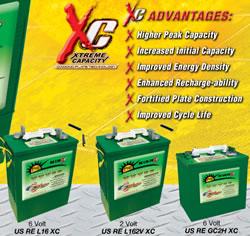New metal hydride clusters provide insights into hydrogen storage
Researchers at the RIKEN Advanced Science Institute (ASI) has shed light on a class of heterometallic molecular structures whose features point the way to breakthroughs in the development of lightweight fuel cell technology.
The most abundant element in the universe, hydrogen holds great promise as a source of clean, renewable energy, producing nothing but water as a byproduct and thus avoiding the environmental dangers associated with existing mainstream energy sources. Broad adoption of hydrogen, however, has stalled because in its natural gaseous state, the element simply takes up too much space to store and transport efficiently.
One way to solve this problem is to use metal hydrides, metallic compounds that incorporate hydrogen atoms, as a storage medium for hydrogen. In this technique, the metal hydrides bind to hydrogen to produce a solid one thousand times or more smaller than the original hydrogen gas. The hydrogen can then later be released from the solid by heating it to a given temperature.
The new heterometallic hydride clusters synthesized by the RIKEN researchers use rare-earth and d-transition metals as building blocks and exploit the advantages of both. Rare earth metal hydrides remove one major obstacle by enabling analysis using X-ray diffraction, a technique which is infeasible for most other metal hydrides – offering unique insights into underlying reaction processes involved. Rare earth metal hydrides on their own, however, do not undergo reversible hydrogen addition and release, the cornerstone of hydrogen storage. This becomes possible through the addition of a d-transition metal, in this case tungsten (W) or molybdenum (Mo).
While rare-earth / d-transition metal-type metallic hydride complexes have been studied in the past, the current research is the first to explore complexes with multiple rare earth atoms of the form Ln4MHn and with well-defined structures (Ln = a rare-earth metal such as yttrium, M = a d-transition metal, either tungsten or molybdenum, and H = hydrogen). In a paper in Nature Chemistry, the researchers show that these complexes exhibit unique reactivity properties, pointing the way to new hydrogen storage techniques and promising environmentally-friendly solutions to today's pressing energy needs.
For more information, please contact:
Zhaomin Hou
Organometallic Chemistry Laboratory
RIKEN Advanced Science Institute
Tel: +81-(0)48-467-9393 / Fax: +81-(0)48-462-4665
Takanori Shima
Organometallic Chemistry Laboratory
RIKEN Advanced Science Institute
Tel: +81-(0)48-467-9392 / Fax: +81-(0)48-462-4665
Global Relations Office
RIKEN
Tel:+81-(0)48-462-1225 / Fax: +81-(0)48-463-3687
Email: koho@riken.jp
Reach us on Twitter: @rikenresearch
Reference
Takanori Shima, Yi Luo, Timothy Stewart, Robert Bau, Garry J. McIntyre, Sax A. Mason and Zhaomin Hou. "Molecular heterometallic hydride clusters composed of rare-earth and d-transition metals." Nature Chemistry, 2011, DOI: 10.1038/NCHEM.1147
Featured Product

